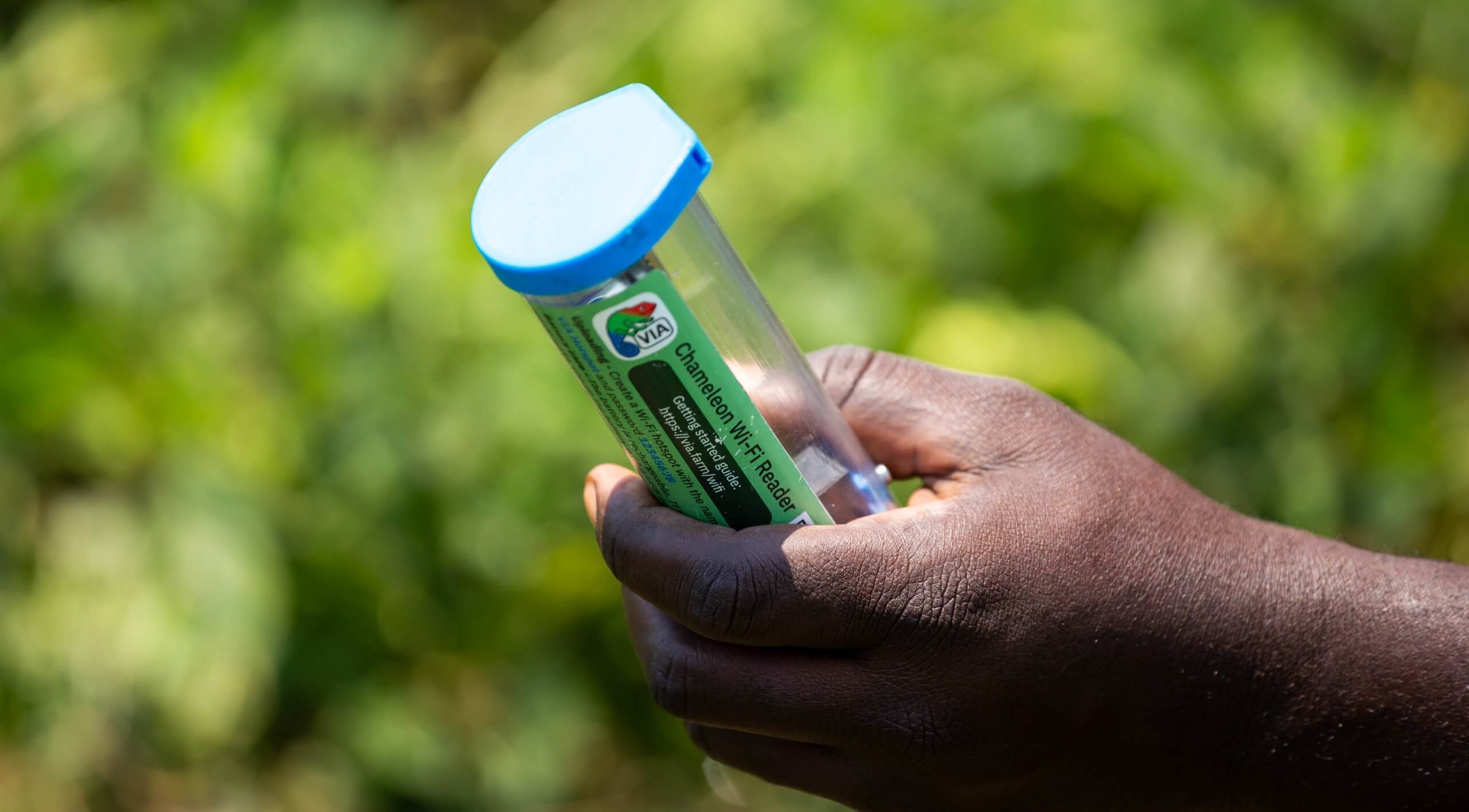When an African farmer earns USD8,276 in a year, we call it success: How ASARECA, AICCRA partners and Virtual Irrigation Academy tool are turning-around smallholder irrigated farming in Uganda
BY BEN MOSES ILAKUT
KASESE, WESTERN UGANDA—United States Dollars (USD) 8,276 in three seasons in one year. When Johny Benet Murangi and his son, Dedan Murangi, both farmers at the Mobuku-1 Irrigation Scheme in Kasese district in Southwestern Uganda, received soil moisture, temperature, nutrients, and salts monitoring tools from ASARECA and partners in October 2024, they were determined to optimize their use to increase crop productivity and income.
Bumper harvest
The Murangis witnessed an outstanding farming season on their three-acre (1.2 hectares) farm with the year’s combined harvest generating a total income of Uganda Shillings 29,000,000 (about USD 8,276), significantly surpassing the typical income of a smallholder farmer in Uganda which is still at a low of USD 795 per year. The Murangis income was derived from two successful harvests within the year. That of maize which posted a yield of 5.5 metric tons (5,500 kg) fetching Uganda Shillings 11million (about USD 3,143) and rice, which produced 6 metric tons (6,000 kg) bringing-in Uganda shillings 18million (about USD 5,149).
Another promising farmer, Ahmed Saturday, earned Uganda Shillings 23million (USD 6,564) in three seasons in one year. Just like Murangi and other folks, he received hands-on training in the use of the climate smart irrigation tools including a Nitrate strip for quick and simple testing of soil nitrogen (nitrate) to guide fertilizer application; an EC Meter for measuring the Electrical Conductivity (EC) of the soil, which helps determine salinity; and a Chameleon sensor that monitors soil moisture to help inform irrigation timing.
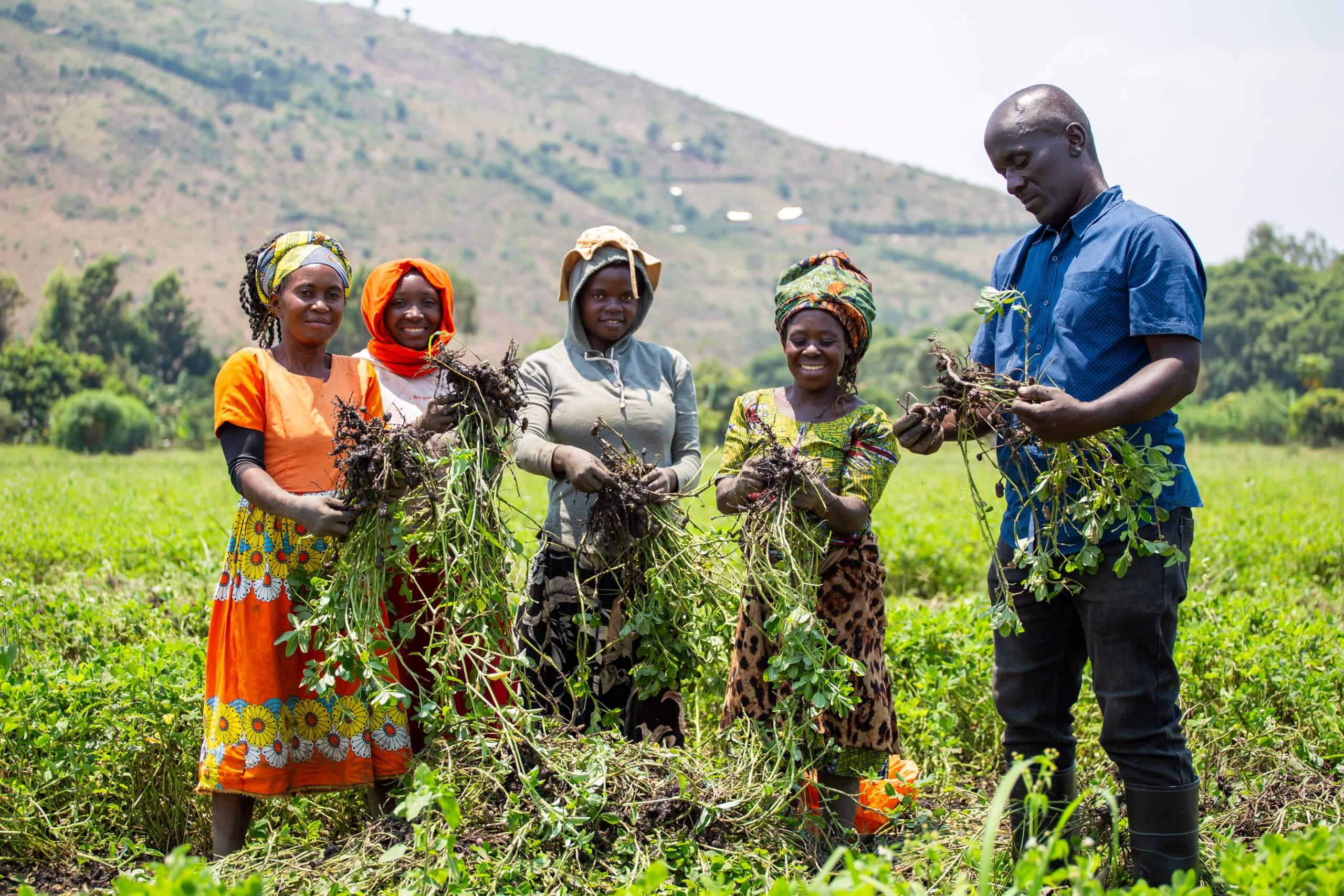
How the farmers did it
Just like Murangi, Ahmed used the new tools and successfully completed three distinct cropping seasons, achieving significant returns. From his one-acre plot, where he previously earned a dismal Uganda shillings 1million (285 USD), he harvested cabbages that brought in a substantial Uganda Shillings 7,000,000 (about USD 1,818). Following this, he harvested 3.5 tons of maize from the same one acre, matching his previous earnings with another UGX 7,000,000 (about USD 1,818), and subsequently harvested—3 tons of rice from one acre, earning UGX 9,000,000 (about USD $2,569).
Pilots that signal hope
While this annual income of USD 8,276 and USD 6,564 achieved by the two smallholder is nowhere close to farm household incomes in developed and mechanized global farming systems, their earning is still a story of hope against the backdrop of low farm income of USD 795 per year in Sub-Saharan Africa. The earnings of the two, considered as elite farmers by our standards, was generated by using the Virtual Irrigation Academy (VIA) that is a suite of user-friendly, low-cost and accurate colour-based tool for smallholder farmers to manage their water and fertilizer usage more effectively and sustainably. The flagship Chameleon system is buried in the ground and depending on the need of the soil, a sensor illuminates in different colours. This allows everyone, regardless of education level, to easily understand how to troubleshoot, repair, and maintain crops. This shift from traditional, low-yield farming to data-driven management is crucial for boosting food security and economic resilience across the region.
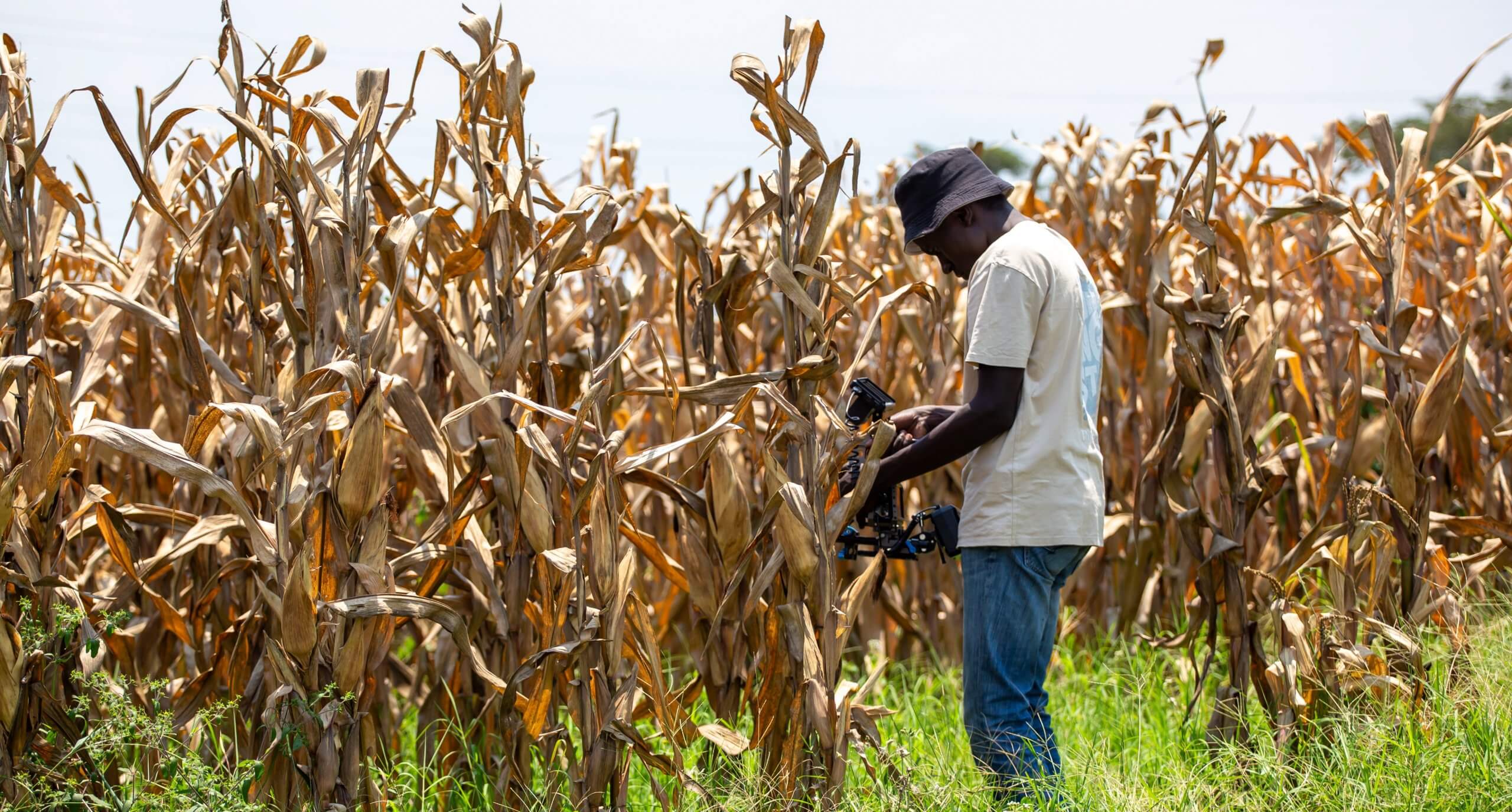
Murangi and Ahmed typify a wider community
Murangi and Ahmed are surrounded by 31 out of the 70 farmers who were trained on VIA and got soil moisture, temperature, and nutrient monitoring tools from ASARECA and partners in 2024. They embraced the innovative technologies which empowered them to enhance precision in decision making in application of irrigation inputs. The tools are aimed at making informed choices and ultimately decisions on application of quantities of water, fertilizer (mainly nitrates), and ensuring appropriate temperatures for healthy crops.
AICCRA project
The training and purchase of the tools was facilitated under the Accelerating Impacts of CGIAR Climate Research for Africa (AICCRA) project financed by the World Bank through Alliance for Bioversity International and CIAT. The Project is aimed at enhancing the capacity of farmers in affected areas to utilize a series of Climate Smart Agriculture (CSA) technologies including those adopted through earlier ASARECA partnerships and interventions such as VIA.
The promising shift was observed by ASARECA and collaborating partners, the Ministry of Agriculture Animal Industry and Fisheries (MAAIF) Uganda this September (2025), when the backstopping team returned to Kasese district in South Western Uganda to take stock of the progress in utilization of the tools. The team visited a sample of 8 farmers who have utilized the tools for three cropping seasons since they were deployed in October 2024. As testified Ahmed, Murangi, and peers, farmers in the intervention area reported improved water use efficiency, improved fertilizer application and use, and the attendant cost reduction, reduced conflicts over irrigation water, and increased productivity in all the three seasons.
Upclose of the Chameleon sensor that monitors soil moisture to help inform irrigation timing
How it all started
ASARECA in collaboration with the Ministry of Agriculture, Animal Industry and Fisheries, Uganda handed over a total of 50 VIA tool kits to various farmer groups to pilot their use for decision support. This followed a week-long practical training and exposure of 70 stakeholders to the equipment including the Chameleon field reader, which signals when to irrigate; the Wetting front detector, which flags when to halt irrigation; the Nitrate strip kit, which monitors leaching of nutrients; and the Chameleon EC meter, which indicates the amount of salts in the soil.
The initial cohort of Trainers of Trainees in October 21-25, 2024 targeted model farmers in the micro-scale irrigation program of Uganda Government Intergovernmental Fiscal Transfers (UgIFT), extension workers, experts from the National Agricultural Research Organization (NARO), District Local Government technicians and Technicians from Mobuku irrigation scheme will train other farmers in the irrigation scheme to utilize these climate smart tools. Upon completing the training, these farmers received the starter equipment with the understanding that they would utilize them to monitor soil moisture for the planned and efficient management of water resources, and to optimize fertilizer use on their farms to ultimately improve productivity and household incomes. During the training, participants developed action plans for utilization of VIA tools. Some of the key actions mooted included engaging diverse stakeholders such as the local governments to further popularize the tools in the communities; mobilizing and registering additional farmers for practical training on use of the tools; forming farmer field schools for on-field piloting; undertaking monitoring and data collection for the deployed tools; and conducting monitoring and evaluation of the progress in adoption.
Capability of the VIA-tool
Their flagship innovation, the Chameleon Soil Water Sensor System, is designed to make soil moisture monitoring simple and intuitive. The system consists of soil sensors buried at different depths (typically 10 cm, 20 cm, and 30 cm) that measure how difficult it is for plants to extract water from the soil. The results are displayed through a color-coded indicator — blue when the soil is wet, green when moisture is adequate, and red when it is dry. This color feedback helps farmers make informed irrigation decisions, ensuring that crops receive the right amount of water at the right time. The Chameleon system also supports fertilizer management by preventing nutrient leaching due to over-irrigation, promoting water-use efficiency, and improving yields. Data collected from the sensors can be uploaded to an online platform, allowing for real-time monitoring, data sharing, and community learning among farmers, extension workers, and researchers. By combining simplicity with scientific accuracy, the VIA’s Chameleon system empowers farmers of all education levels to see what the plants feel—enabling better decisions for soil health, crop productivity, and environmental sustainability.
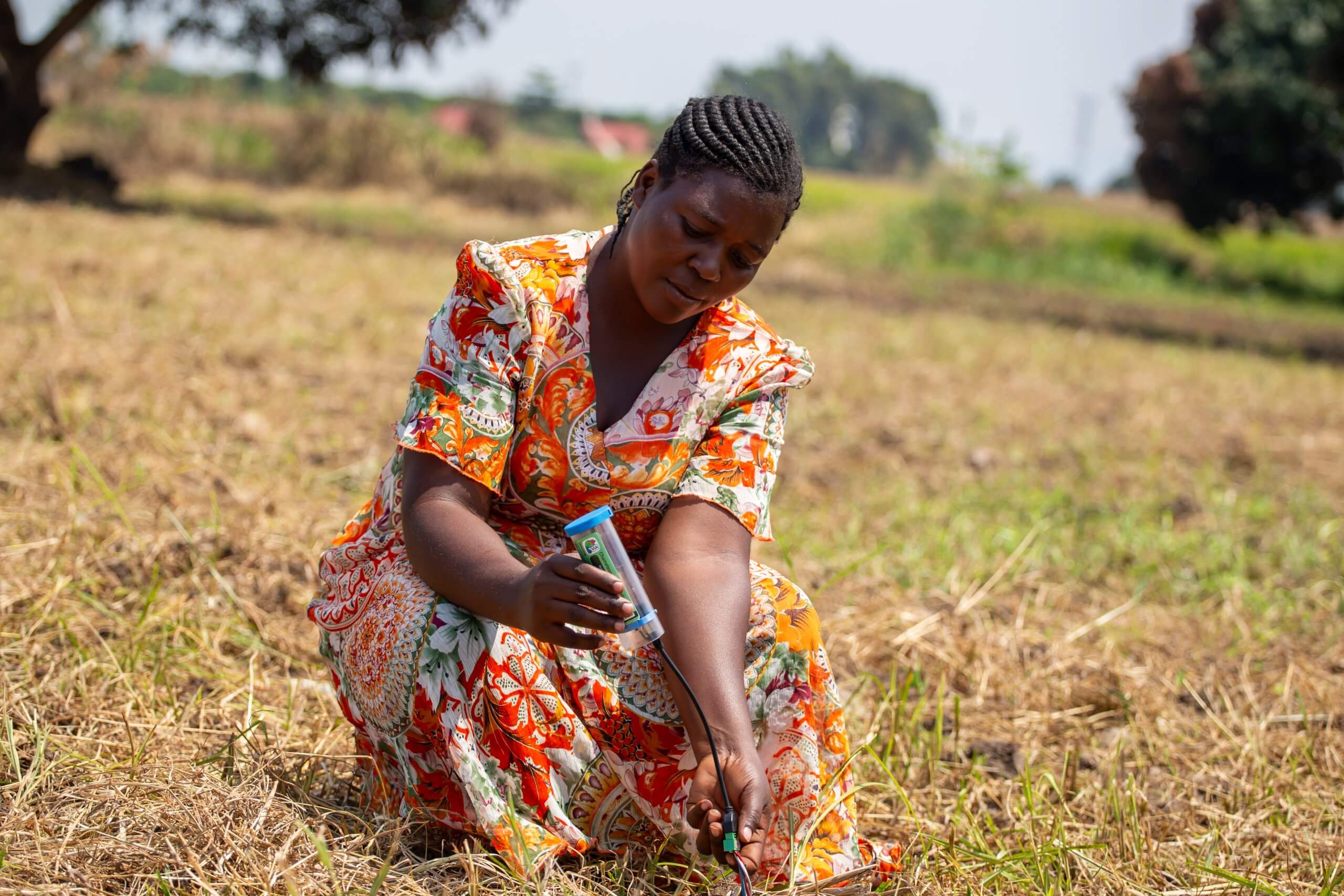
Leveraging on existing Uganda national and local government structures
From the onset, the project integrated the role of the central Government Irrigation system through the Ministry of Agriculture Animal Industry and Fisheries (MAAIF) and the local Government leadership to support the district agricultural production and extension departments to backstop the farmers to expedite the diffusion of this climate smart innovation. The successive Chief Administrative Officers of Kasese district undertook to support the initiative as it addresses the acute water shortage and characteristic dry spells in the district which are affecting crop and animal productivity. At the time of introduction of the tools, the then District Administrative Officer Mr. Byamungu Elias, as did the District Production Officer, Mr. Julius Baluku, said the innovations would boost the functionality of the existing Government Irrigation infrastructure. “We will certainly follow up the utilization of the equipment by integrating them into the Parish Development Model, the government rural development framework, and the micro-irrigation Programmes both aimed at enabling farmers to improve food and income security,” Byamungu pledged.
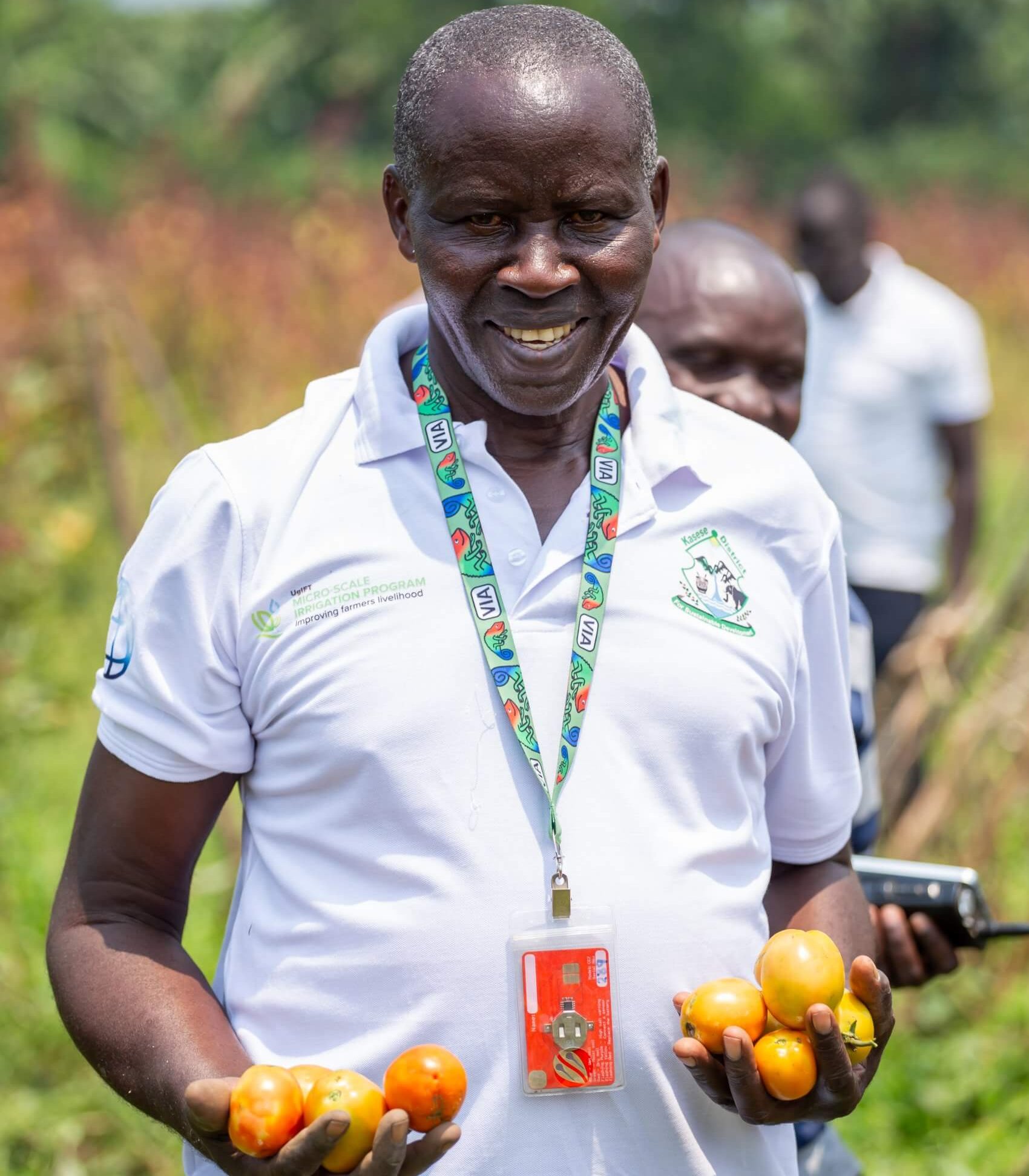
Sustainability at the district level
Just like his predecessor, the new Chief Administrative Officer, Mr Paul Walakira picked up the initiative for support, emphasizing that the district, being a vast semi-arid area, needed expansion of the areas under soil water and nutrient monitoring tools. While the District Production Officer, Ms Komya, acknowledged the role of the tools in water use efficiency. Given this background, Ms Konya noted that she has had keen interest in activity from the start and observed that conflicts over water have been reduced. The Chief Administrative Officer committed to provide more tools to the communities as part of Government contribution.
According to the Senior Agricultural Engineer in charge of water for agricultural production in Kasese District, Eng. Benson Agaba, Kasese being an irrigation hub in the country was selected to pilot the dissemination of water and nutrient monitoring tools as they are appropriate technologies which are affordable and easy to use, unlike the often expensive and complicated tools. Going forward, Eng. Agaba committed that the district under the production department would in the near future to acquire more 60 kits to be used to replace damaged parts as well as expand to other farmers outside Mobuku irrigation scheme.
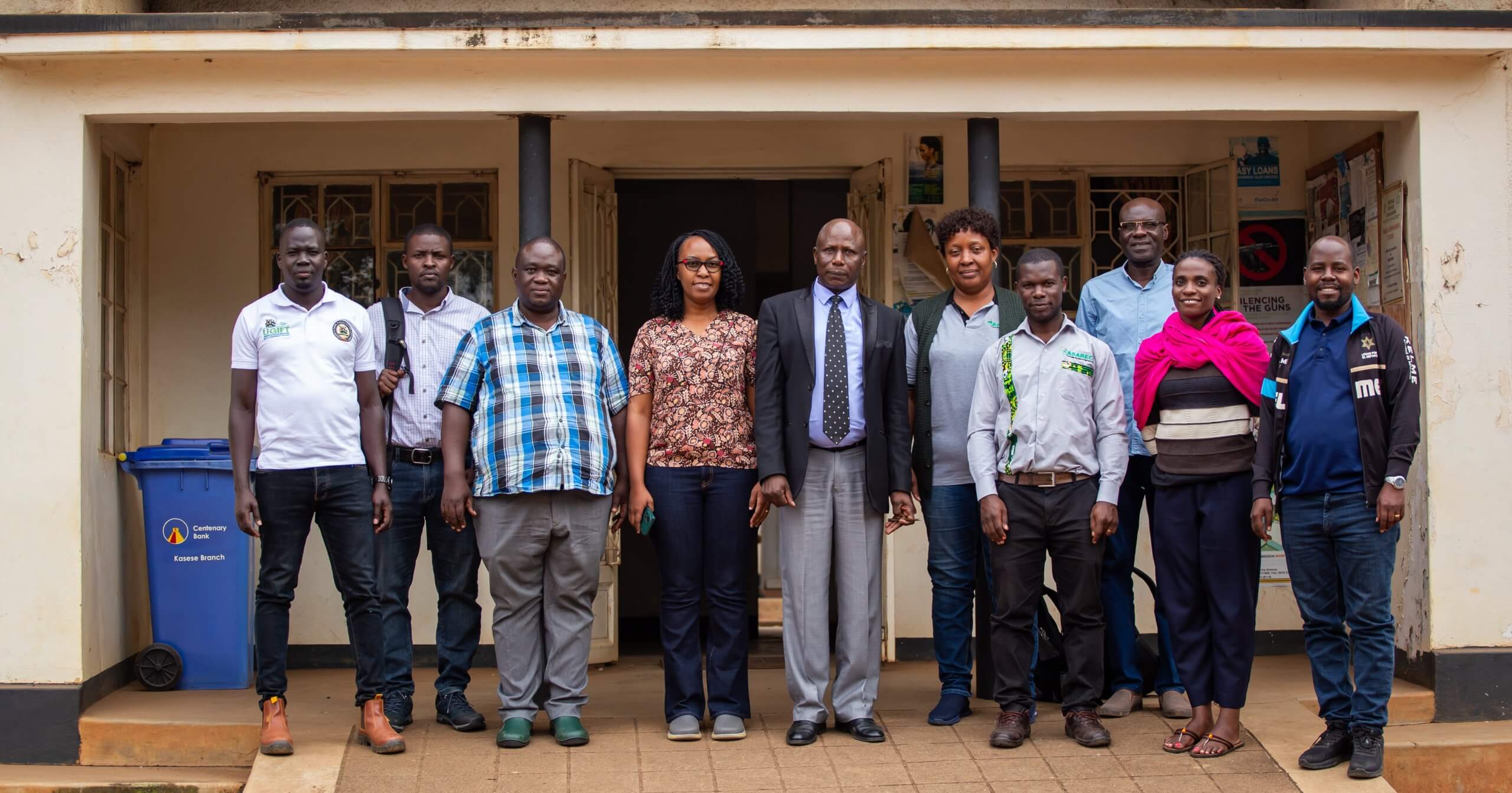
Sustainability through the Ministry of Agriculture Animal Industry and Fisheries
Observing that farmers are utilizing a number of tools for efficient water use and soil nutrient monitoring to grow staples like rice, maize and horticultural crops, officials from Uganda’s Agriculture Ministry pledged to ‘walk’ with the farmers to ensure the tools are fully adopted. The Principal Engineer, Ministry of Agriculture, Eng. James Tondo Kaasozi said, “The soil moisture kits are used for planning purposes for the farmer to detect or know how much water is in the soil, when or not to irrigate, which part of the garden should have more water”. He committed, “Our work as Government, is to ensure the kits are more functional to give the farmers accurate data, we also encourage the beneficiaries to report any malfunction to the district senior agricultural engineer to manage as the district has allocated resources to service the kits.”
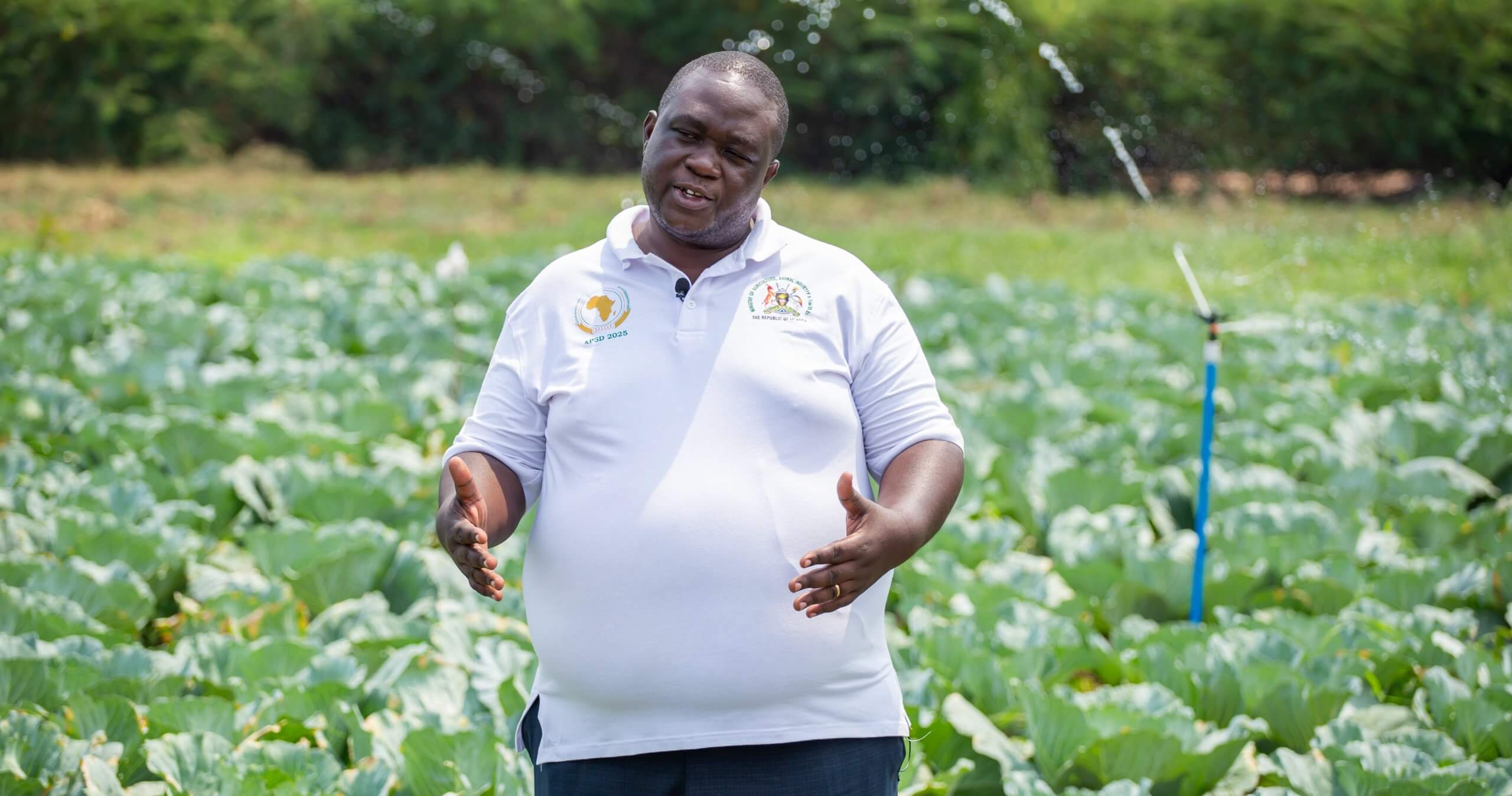
His colleague, Eng. Allan Orlando Senior Irrigation and drainage Engineer under the department for agriculture infrastructure, mechanization, and water for agriculture production, MAAIF said the package is tailored to enable farmers to use the technologies for efficient water use. “Within the short term, the farmers have used the tools, they have reported water use efficiency, reduced costs of fertilizer, as well as make water available to other farmers,” he observed.
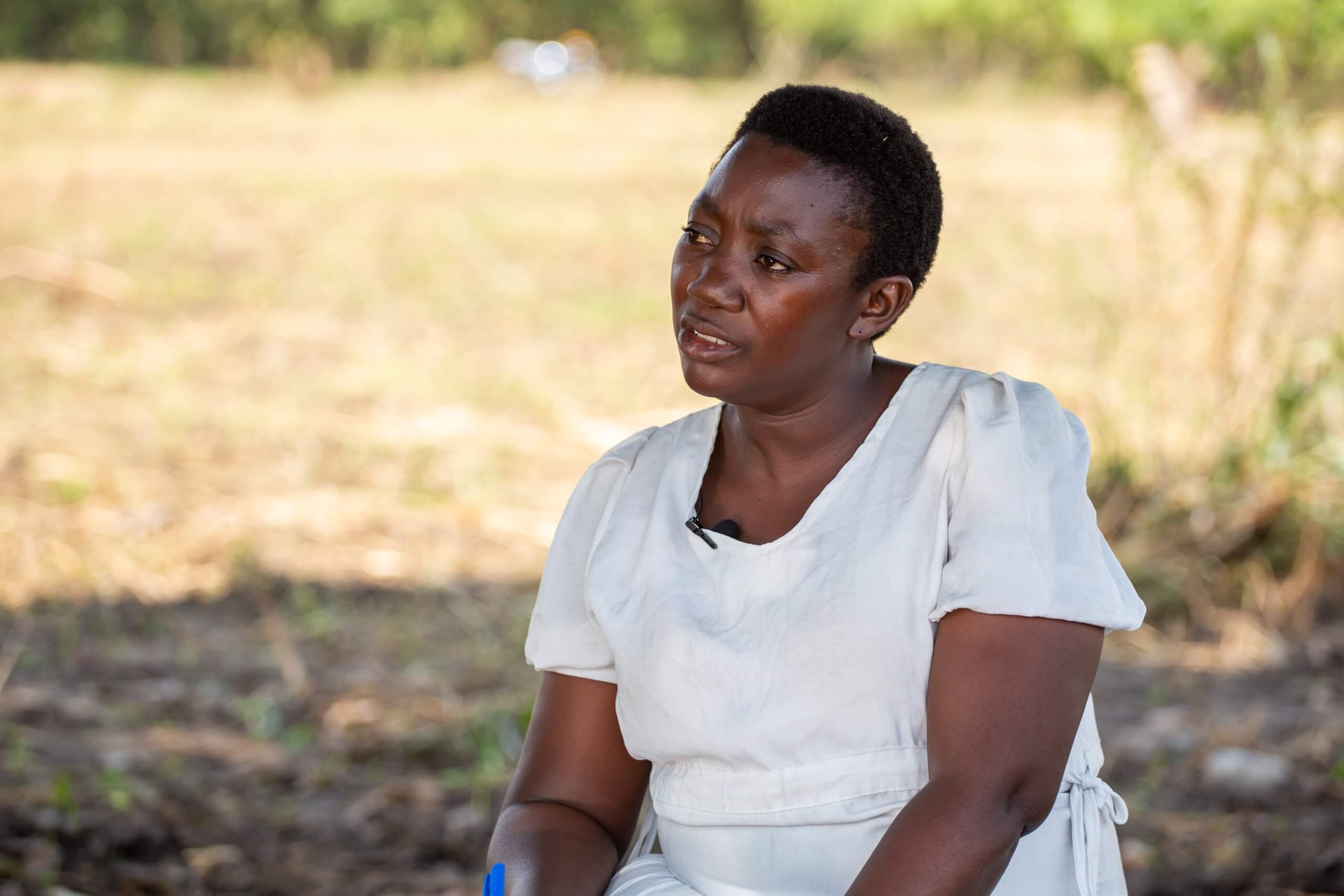
Sustainability through agricultural extension services
Ms Kabasinguzi Jesca, an Agricultural Extension Officer of the locality explained how the project mobilized existing capacities and structures within the local government to support dissemination of the virtual irrigation tools. “As focal persons, we trained farmers on how to establish the tools in the fields and how to take the readings. The tools enabled the framers to save time and operating costs, and the cost of fertilizer as they have reduced the interval of irrigation from three times previously to only once a week,” she explains. “In some gardens we would test and notice high salinity and advise farmers which crop to grow as some crops cannot survive in saline soils.”
AICCRA project leverages on winning partnerships to scale CSA technologies
The scaling of globally tested noble technologies in Mubuku irrigation scheme is in line with two key components of the AICCRA project namely: (i) strengthening partnerships for delivery of climate-smart innovations in agriculture through building of human and institutional capacities, thus enabling researchers and development workers to anticipate likely impacts on of climate change on agriculture, food security, and rural livelihoods; and (ii) supporting the uptake of Climate-Smart Agriculture innovations among small-scale farmers and intermediaries in selected value chains by supporting the validation of CSA technologies in the field, linking validated technologies to technology transfer systems, and improving access to climate-informed agricultural advisory services.

